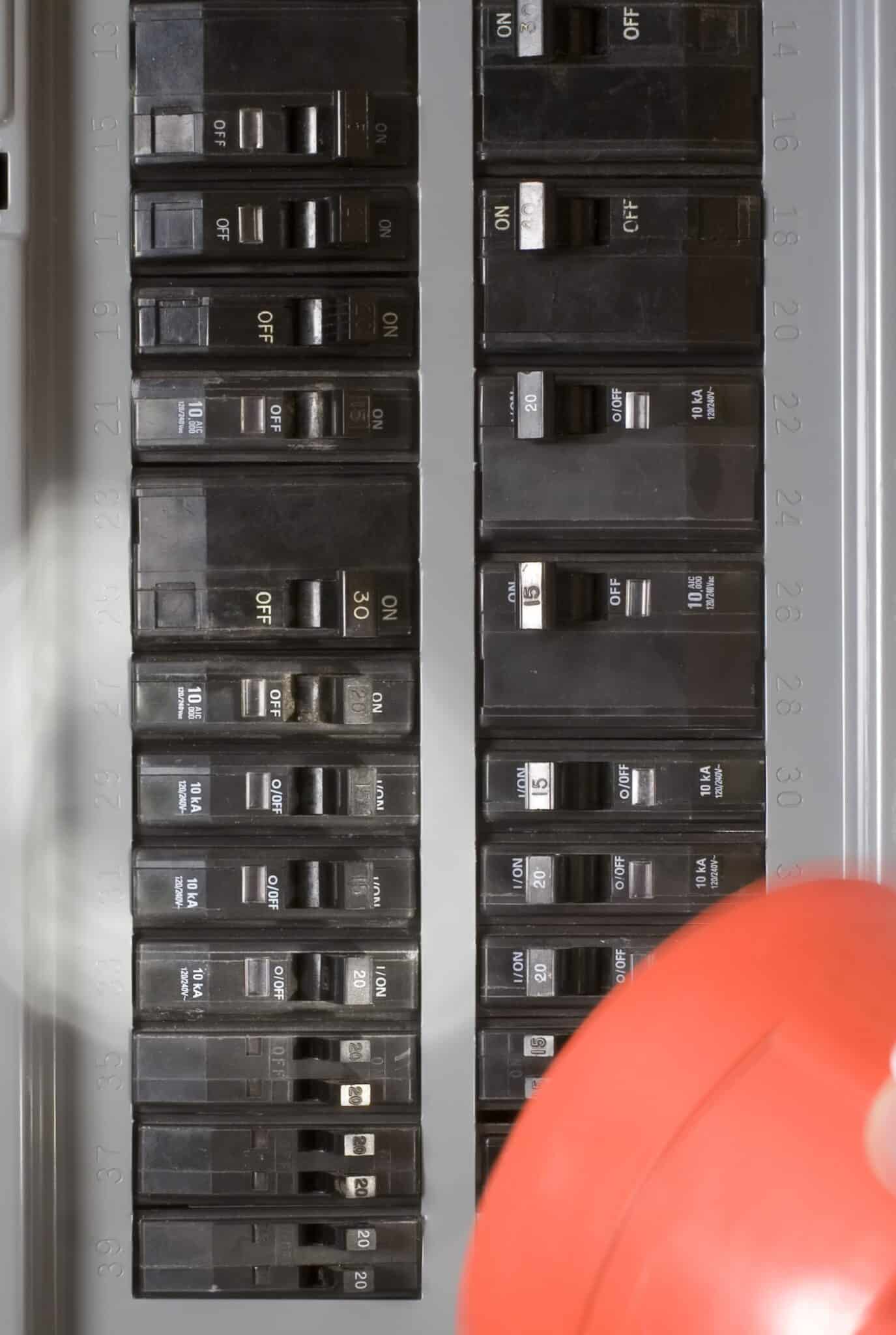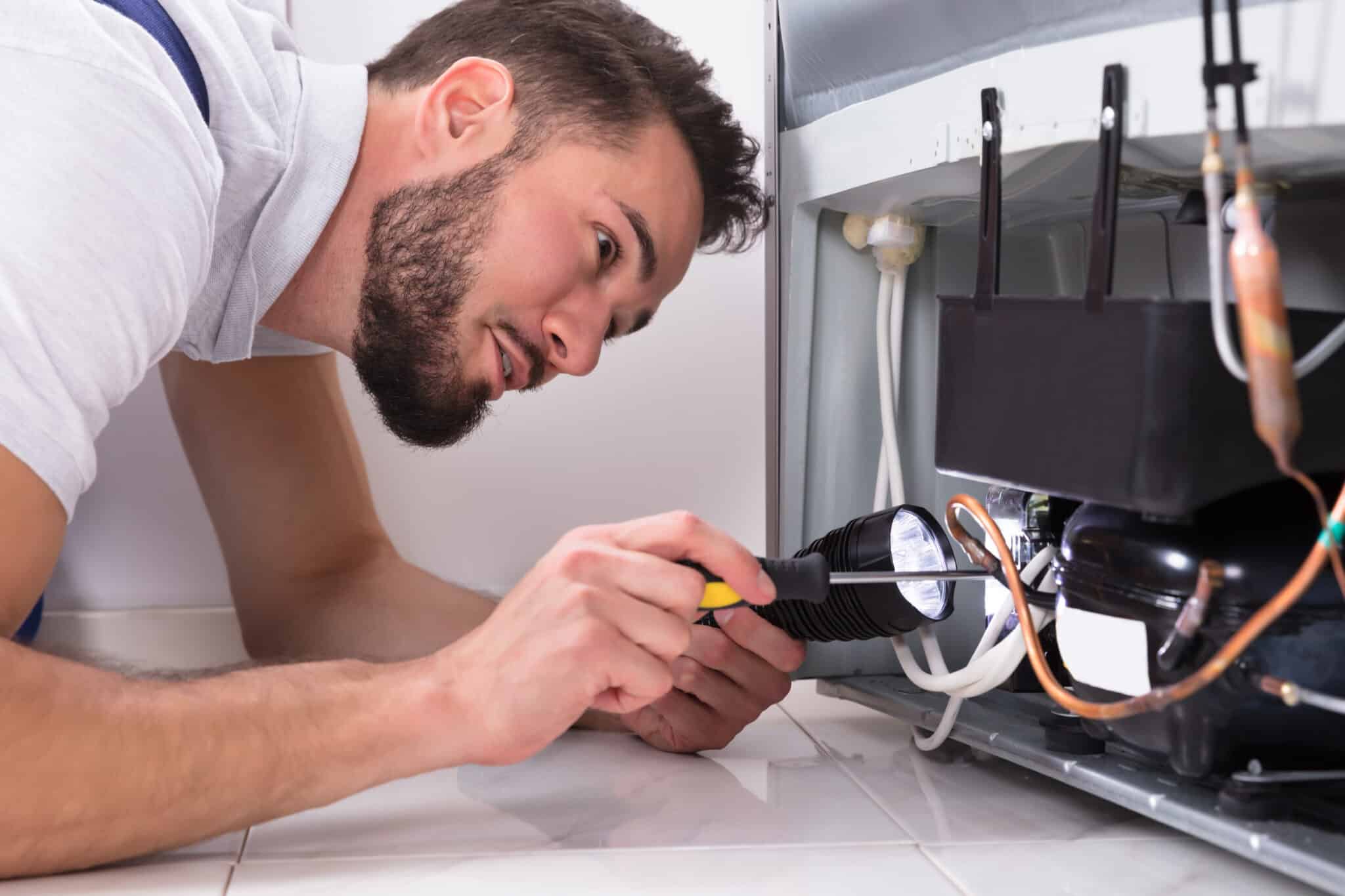Electrical fault finding is an essential skill for maintaining a safe and efficient home. In Lancaster, PA, and surrounding areas, homeowners often encounter issues that require a keen eye for detail and a solid understanding of electrical systems. Whether it’s flickering lights or an outlet that’s stopped working, identifying the root cause is the first step toward a solution. This process, while it may seem daunting, is crucial for ensuring the safety and functionality of your home’s electrical network.
The journey to mastering electrical fault finding involves more than just a cursory glance at your wiring. It requires a systematic approach, using both traditional techniques and modern tools to diagnose issues accurately. Residents of York, PA, for instance, have seen how quickly electrical problems can escalate if not addressed promptly. By learning the basics of electrical fault finding, homeowners can prevent minor issues from becoming major hazards.
In this guide, we’ll dive deep into the techniques and tools necessary for effective electrical fault finding. From understanding your home’s electrical layout to using the right diagnostic equipment, we’ll cover all the bases. Our aim is to equip you with the knowledge to identify common electrical faults, understand their potential causes, and know when it’s time to call in a professional from Mister Sparky.
Remember, electrical fault finding is not just about fixing problems, it’s about ensuring the safety and longevity of your home’s electrical system. By becoming proficient in identifying and addressing electrical issues, you’re taking a proactive step towards maintaining a safe and comfortable living environment. Let’s embark on this enlightening journey together, learning the ins and outs of electrical fault finding in Lancaster, PA, and beyond.
Understanding the Basics of Electrical Fault Finding
Understanding the basics of electrical fault finding is a crucial step for any homeowner in Lancaster, PA. It begins with recognizing the signs that indicate a problem with your electrical system. These can range from the obvious, like an outlet not working, to the less apparent, such as an unusually high electricity bill. Knowing these signs helps in taking timely action to prevent further damage.
The next step involves getting familiar with your home’s electrical layout. This knowledge allows you to pinpoint where problems might occur and understand the flow of electricity in your home. For residents in York, PA, understanding the layout can be particularly helpful given the variety of home styles and ages in the area. It’s a foundational skill that supports effective electrical fault finding.
Using the right tools is also essential in diagnosing electrical issues accurately. Basic tools like a multimeter, which measures voltage, current, and resistance, are indispensable. They allow you to perform tests to identify where the fault lies. Additionally, a circuit tester can be handy for checking if outlets are properly grounded, ensuring you’re working safely.
Lastly, knowing when to call a professional is key. Some electrical problems can be complex and dangerous to tackle without the right expertise. If you’re unsure about a diagnosis or the repair process, reaching out to a professional electrician from Mister Sparky can save time and avoid potential hazards. They have the experience and tools to resolve issues efficiently, ensuring your home’s electrical system is safe and functional.

Common Types of Electrical Faults in Homes
In homes across Lancaster, PA, homeowners often come across a variety of electrical faults. One common issue is a short circuit, which occurs when a hot wire touches a neutral or ground wire, causing an excess flow of electricity and potentially tripping the breaker. Another frequent problem is an open circuit, where an electrical path gets broken, stopping the flow of electricity. These faults can lead to power outages in parts of your home and require prompt attention for safety and functionality.
Ground faults are also prevalent, particularly in areas prone to moisture, like bathrooms or kitchens. This type of fault happens when electricity takes an unintended path to the ground, posing a significant risk of shock. In York, PA, where homes range from new constructions to historic buildings, outdated wiring can often lead to such dangers. Homeowners should be vigilant and consider an inspection if their house’s electrical system hasn’t been updated in decades.
Overloaded circuits are a modern-day issue, with the increasing number of gadgets and appliances in homes. When too many devices draw power from the same source, it can exceed the circuit’s capacity, leading to overheating and potentially a fire hazard. Identifying and redistributing the electrical load can mitigate this risk, ensuring your home’s electrical system can handle your needs safely.
Lastly, electrical surges are brief spikes in power that can damage electronics and degrade the life of electrical components in your home. These surges can be caused by lightning strikes, faulty wiring, or issues with the power lines. By using surge protectors and ensuring your home’s wiring is in good condition, you can protect your appliances and electronic devices from unexpected spikes in electricity.
Essential Tools for Effective Electrical Fault Finding
When embarking on electrical fault finding, having the right tools at your disposal is crucial for both safety and accuracy. A multimeter is an essential instrument that allows homeowners to measure voltage, resistance, and current in their electrical systems. This tool is invaluable for diagnosing issues, whether you’re dealing with a flickering light in Lancaster, PA, or an unresponsive outlet. By providing precise readings, a multimeter helps pinpoint the exact location and nature of electrical faults.
Another key tool in the electrical fault finding arsenal is a circuit tester. This simple device is designed to check for proper grounding in electrical outlets, a fundamental aspect of electrical safety in any home. In York, PA, where homes can range from new constructions to historic buildings, ensuring outlets are correctly grounded is especially important. A circuit tester can quickly alert you to potential hazards, allowing for prompt corrective action.
For more in-depth analysis, an insulation resistance tester proves to be a valuable asset. This tool checks for insulation breakdown, a common problem that can lead to dangerous situations like short circuits or electrical fires. It works by applying a high voltage to a circuit and measuring how much current leaks through the insulation. This process helps identify deteriorated insulation before it can cause harm, making it a critical component of preventive maintenance.
Lastly, a clamp meter is another indispensable tool for effective electrical fault finding. It allows electricians and savvy homeowners to measure the current flowing through a conductor without making direct contact. This feature is particularly useful for troubleshooting overloaded circuits, a common issue in homes filled with modern appliances and electronics. With a clamp meter, detecting and resolving issues becomes safer and more efficient, ensuring your home’s electrical system operates smoothly.
Step-by-Step Guide to Diagnosing Electrical Issues
Diagnosing electrical issues begins with a thorough inspection of the area where the problem is observed. Start by checking for any visible signs of damage or wear on outlets, switches, and visible wiring. This initial step can often reveal simple issues such as loose connections or damaged components that are easy to fix. In Lancaster, PA, where homes range in age, this step is crucial for identifying problems in older electrical systems.
Next, use a multimeter to test the voltage and continuity at various points in the circuit. This helps in understanding whether the electrical flow is consistent and within safe limits. For instance, if a light fixture in York, PA, is not working, testing the fixture’s connections with a multimeter can confirm if the issue lies within the fixture or elsewhere in the circuit. Accurate readings are key to pinpointing the location of faults.
If the multimeter indicates an issue, further investigation is needed to identify the specific type of fault. For example, if the readings suggest a short circuit, visually inspect the wiring for any points where insulation might be damaged or wires may be touching. Sometimes, the problem may not be visible, necessitating the use of an insulation resistance tester to check for hidden issues within walls or ceilings.
Finally, once the fault is identified, decide on the best course of action. Minor repairs like replacing a damaged wire or tightening loose connections can often be done safely by the homeowner. However, for more complex issues, such as rewiring or addressing problems with the home’s main electrical panel, it’s wise to contact a professional electrician. Their expertise ensures that repairs are done safely and up to code, maintaining the electrical system’s reliability and safety.
Safety Precautions for Electrical Fault Finding
When embarking on electrical fault finding, prioritizing safety is paramount. Before diving into any repair work, turning off the power at the main breaker is a must to prevent any risk of electric shock. This step ensures that you can inspect and work on electrical components in Lancaster, PA, without putting yourself in danger. Using insulated tools and wearing rubber-soled shoes further enhances safety, providing an additional layer of protection against accidental electrical contact.
Next, understanding the importance of proper equipment cannot be overstated. A pair of safety goggles protects your eyes from potential sparks or debris, a common precaution during electrical work. Additionally, having a voltage tester on hand before touching any wires confirms that the power is indeed off. This practice is especially crucial in York, PA, where the blend of old and new homes can present unique electrical challenges.
Moreover, being aware of your surroundings plays a critical role in electrical fault finding. Working in a well-lit area prevents straining your eyes and helps you spot issues more effectively. It’s also wise to keep water away from your work area to avoid any accidental spills that could lead to electric shock. These precautions are simple yet effective in maintaining a safe environment while diagnosing and fixing electrical issues.
Lastly, never underestimate the complexity of electrical systems. If you encounter a problem that seems beyond your skill level, calling a professional is the safest course of action. Electricians have the training and tools necessary to address issues safely and efficiently. Remember, electrical fault finding is about ensuring the safety and functionality of your home’s electrical system, and sometimes that means knowing when to seek expert help.
When to Call a Professional Electrician
While tackling minor electrical issues can be a DIY project for many homeowners, there are certain situations where calling a professional electrician becomes necessary. In Lancaster, PA, complex electrical problems that go beyond simple fixes require the expertise of a seasoned professional. These experts have the training and tools to safely diagnose and repair issues, ensuring your electrical system functions correctly. Recognizing when to call in a professional can save you from potential hazards and costly mistakes.
Electrical fault finding often involves dealing with intricate systems that, if improperly handled, can lead to serious safety risks. For instance, if you’re experiencing frequent circuit breaker trips or your lights dim when using appliances, these could be signs of a more severe problem. In such cases, a professional electrician in York, PA, can identify the root cause and implement a safe, effective solution. Their knowledge helps prevent future issues, offering peace of mind.
Another indicator that it’s time to consult with a professional is when you’re dealing with outdated wiring. Homes with old electrical systems may not meet current safety standards, posing a risk to occupants. A professional electrician can upgrade your wiring, ensuring it’s safe and compliant with local codes. This is particularly important in historic homes where preserving safety without compromising the structure’s integrity is crucial.
Lastly, any electrical work that involves the main power line or panel should be handled by a professional. These components are the heart of your home’s electrical system and require precise, knowledgeable handling. Attempting to fix these elements on your own can result in dangerous situations, including electrical fires or shocks. When in doubt, reaching out to a professional electrician ensures that your electrical system is in good hands, safeguarding your home and family.

Preventative Measures to Avoid Electrical Faults
Taking proactive steps towards electrical fault finding can significantly reduce the risk of electrical issues in your home. In Lancaster, PA, homeowners can begin by regularly inspecting electrical appliances and cords for wear and tear. This simple action helps catch potential problems early, preventing them from escalating. Ensuring that all appliances are in good condition and cords are not frayed or damaged keeps your home safer.
Another effective preventative measure is to avoid overloading electrical outlets and circuits. In York, PA, with a mix of old and new homes, it’s crucial to understand the capacity of your electrical system. Plugging too many devices into one outlet or circuit can cause overheating and lead to more serious issues. By distributing electrical devices evenly across different circuits, you can minimize the risk of overload.
Regular maintenance checks by a professional electrician can also play a key role in preventing electrical faults. These experts can spot potential problems that may not be obvious to the untrained eye. They ensure your home’s electrical system complies with the latest safety standards, providing peace of mind. Scheduling an annual inspection can help identify and rectify issues before they become hazardous.
Lastly, installing surge protectors in your home can safeguard your appliances and electronics from voltage spikes. Power surges, whether from lightning strikes or fluctuations in the power grid, can damage sensitive electronics. By using surge protectors, you protect your valuable devices from unexpected spikes, extending their lifespan. This small investment can save you from costly replacements and repairs in the long run.
Frequently Asked Questions About Electrical Fault Finding
What causes electrical faults in homes?
Electrical faults in homes often stem from outdated wiring that can’t handle modern demands. Loose connections also contribute, leading to overheating and potential hazards. Overloading circuits with too many devices is another common cause. Regular inspections can help identify and fix these issues, ensuring safety and efficiency.
How does electrical fault finding work?
Electrical fault finding begins with a thorough inspection of the electrical system. Experts use specialized tools to track down the source of the problem. They check for common issues like short circuits, ground faults, and wiring defects. This method ensures quick, accurate diagnosis and repairs, restoring safety and functionality.
What tools are needed for diagnosing electrical issues?
Diagnosing electrical issues requires specific tools for accuracy. A multimeter measures voltage, current, and resistance, essential for identifying problems. Insulation testers check for damaged wires, ensuring safety. Circuit finders trace circuits and locate breaks or shorts. Lastly, a clamp meter detects electrical flow without direct contact, offering a safe way to gauge current.
Can electrical fault finding prevent fires?
Yes, electrical fault finding plays a crucial role in preventing fires in homes. By identifying and fixing issues like short circuits and overloaded circuits, it reduces the risk of sparks and overheating. Regular checks ensure that electrical systems are safe and up to code. This proactive approach keeps homes safe from the devastating impact of electrical fires.
What are the common signs of electrical faults?
Common signs of electrical faults include frequent breaker trips, which indicate an overloaded circuit or short. Flickering lights can signal loose wiring or an overburdened system. A burning smell from outlets or switches warns of dangerous overheating. Lastly, buzzing sounds from electrical panels or outlets suggest faulty wiring or connections, needing immediate attention.






